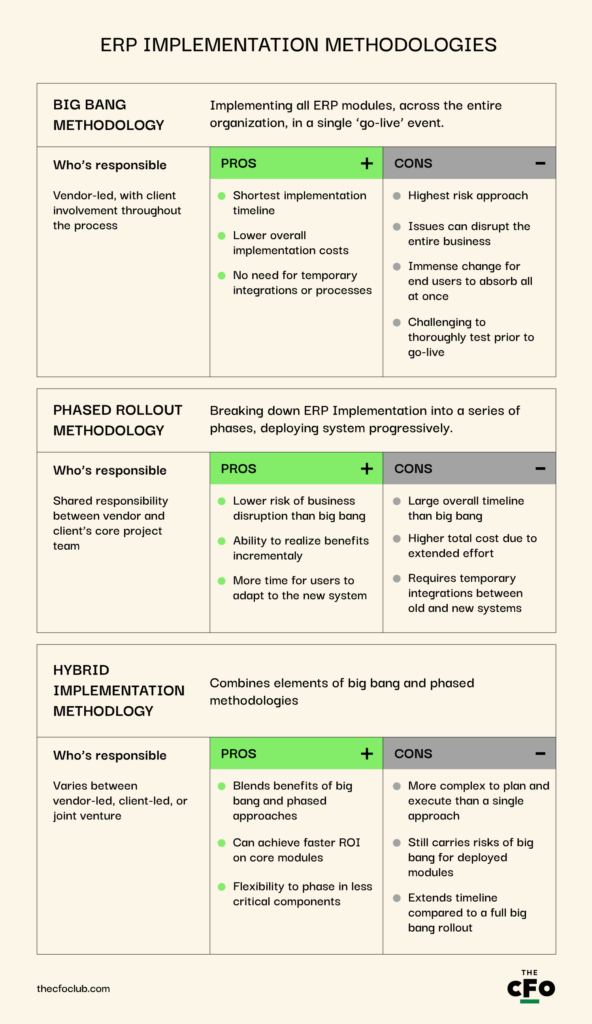ERP Explosion: Growth Like No Other: The global ERP software market is expected to reach approximately $110 billion by the end of 2025.
Roadblocks to Success: Most businesses (57%) state that poor project management is one of the biggest roadblocks they face in ERP implementation. Others include cost and data migration.
Looking to the Future: Both AI and ecommerce solution integration will impact how ERPs operate in the future, with 50% of current work expected to turn to automation and 94% of all purchases being ecommerce-based.
Did you know that the global market for ERP software grew by 8% in the past 3 years? The numbers don’t lie: ERP adoption is growing fast, and the impact is hard to ignore.
As a financial controller, I’ve seen firsthand how ERP systems can transform the way a business runs—especially when it comes to managing finances, operations, and data in one place.
In this article, we’ll walk through key ERP statistics that highlight why more companies are jumping on board—and how these systems are reshaping the way organizations run.
ERP Market Share and Growth
ERP systems unify key business functions like manufacturing, HR, and finance. They streamline your business processes and help you maximize resources, and in the past few years, the ERP software market has surged. Why? Well, because the technology is continuing to advance at a fast pace and more businesses are chasing more opportunities for operational efficiency.
And I’m not just saying this because I’m a huge ERP advocate, the numbers can do their own talking (for real).
Global Market Size and Projections
- The global ERP software market size was valued at $51.61 billion in 2023. By 2024, that number had shot up to about $55.38 billion.
With big players like Microsoft, NetSuite, and Oracle SAP driving widespread ERP usage, the market is poised for even more growth.
- The ERP industry is expected to grow at a compound annual growth rate (CAGR) of 7.1%, hitting approximately $110.15 billion by 2034.
- This market growth rate is unsurprising because approximately 97% of businesses with ERP systems report improved processes.
- Most benefits came in the form of product and efficiency (74.3%), operating and labor costs (56.8%), and real-time data (49.2%).
So, of course, it makes sense that other organizations would want to follow suit.

ERP systems were first adopted by larger corporations—like Hershey’s and Ford—for supply chain management. Once cloud ERP software launched, enterprises could streamline even more processes across departments and locations, leading to widespread growth.
Today, ERP adoption is popular among small and medium-sized businesses (SMBs). And, like their impact on large firms, ERP systems drive revenue growth and visibility for small businesses and their midsize counterparts.
Here’s what the ERP adoption numbers look like today:
- Over 80% of SMBs with less than $50 million in annual revenue use ERPs.
- More than 70% of large enterprises leverage ERP systems.
- About 34% of ERP users are manufacturing firms, making them the top ERP adopters.
ERP Implementation Statistics
It’s no secret: ERP implementations are challenging, but they’re also rewarding. Here’s the data to back me up:
- ERP manufacturers and distributors say 67% of their implementations are successful.
- 93% of organizations consider their ERP implementation a success (though some later fail over time).
However, that doesn’t always mean your implementation will run smoothly. You can follow the same practices and tips, but it could go an entirely different way. Consider these stats, for example:
- 54% of companies report that poor project management is one of their barriers to implementing an ERP system.
Only half of implementation projects are completed in their expected timelines. Approximately 31% say the project took longer than expected, while only 8% reported it being completed earlier than expected.
Implementation Approaches
Overall, your ERP implementation approach determines its cost, risk level, and speed. It also defines how smoothly your entire business transitions into using the system. So, choosing the right one requires proper research and consideration.
There are five main ERP implementation methodologies, but only three that most companies go for: the Big Bang approach, the Phased approach, and the Hybrid approach.
- 20.8% of companies prefer the Big Bang approach to ERP implementations, wherein an organization switches from its current ERP system to another in a single step. This switch sweeps across all departments all at once.
- About 58.5% of companies prefer the Phased ERP implementation approach, whereby you roll out your ERP solution over months or weeks across different locations, business units, or modules.
- 20.8% of organizations prefer hybrid ERP implementation, which combines elements of the Big Bang and Phased approaches to create a unique business-specific solution.
Which method you choose will be based on your business model and requirements, but there are some additional notes you should consider:

Common Challenges
Despite their benefits, ERPs are prone to issues that could ruin entire projects and cause huge financial losses. The most common ERP implementation challenges are about customization and data migration.
- According to 22% of businesses, data migration and validation were their biggest challenges to implementation.
- Cost is also a factor, with the average cost per user at approximately $9,000—around 38% of companies go over budget, either due to underestimations or expanded scopes.
ERP ROI and Benefits
Implementing any type of ERP system is a huge investment, no matter your organization’s size. That’s why you must be sure that the money, time, and human resources you put in would be worth it. Enter ERP ROI and benefits.
- Most organizations (83%) share that their projects met their ROI expectations, with only 9% reporting that their ERP did not increase ROI.
- The most common benefits include optimized inventory levels (91%), productivity (78%), removing silos (77%), increased vendor interactions (76%), and improved compliance (75%).
- 40% of companies also saw a reduction in IT costs after implementing an ERP system.
-

BlackLine
Visit WebsiteThis is an aggregated rating for this tool including ratings from Crozdesk users and ratings from other sites.4.5 -

Xledger
Visit WebsiteThis is an aggregated rating for this tool including ratings from Crozdesk users and ratings from other sites.4.5 -

FreshBooks
Visit WebsiteThis is an aggregated rating for this tool including ratings from Crozdesk users and ratings from other sites.4.5
Cloud ERP Statistics
Cloud ERP solutions became a thing in 1998 when NetSuite introduced the first cloud-based ERP system—and since, have continued to provide several benefits for businesses. Despite initial security concerns, preference for these cloud-based ERPs has only grown over the years.
Adoption Rates
- As of 2017, 60% of businesses with ERP solutions still relied on legacy on-premise systems. However, in 2023, 64.5% of companies picked cloud ERP software over on-premise systems. And, by 2024, that number grew to 78.6%.
- After adopting a cloud ERP, 94% of companies reported improvements in security, with 11% encrypting the majority of their cloud data.
- It’s projected that the cloud computing market will grow, starting with cloud software.
ERP Trends for the Future
As more and more businesses rely on ERP technology, its popularity will only continue to grow. So you don’t have to do any heavy lifting, I’ve studied and analyzed the latest trends in ERP:
- The entire ERP market is expected to reach $71.62 billion in 2025 with a compound annual growth rate of 9.76%. This will likely be due to cloud adoption, integrations, and sustainability.
- More ERP systems are integrating with ecommerce solutions. It's expected that by 2040, around 94% of all purchases will be ecommerce-based.
- Gartner predicts that in 2025, IT spending will hit $5.61 trillion, which is a 9.8% increase from 2024.
- AI will continue to integrate into our lives, with 50% of current work activities turning to automation by 2030.
- Within 5 years, $2 trillion in revenue will change over to companies that use AI for customer interactions.
AI in ERP software drives efficiency, enhances customer experiences, and informs decision-making. It has great data analysis potential and its role in business will become even more integral and transformative.
Success and Failure Rates
Over the years, I’ve studied many implementation success stories. At the same time, I’ve also analyzed businesses that suffered ERP implementation failure. Here’s a look at that data:
- 55% to 75% of ERP projects fail, meaning only 25 to 45% of their surveyed implementations worked out.
- 31% state that testing is the biggest challenge they face when implementing an ERP.
- Poor planning is another reason most ERP projects fail—only 11% go live as scheduled.
- Also, 82% of Chief Information Officers say employee resistance is the top ERP adoption barrier.
While these numbers may seem scary, it doesn’t mean you should shut down your ERP process and pull the plug entirely.
- Although half of ERP projects fail, 98% of businesses (small, midsize, and large) experienced some degree of success with their ERP implementation.
- This success, for most companies, could be attributed to institutional leadership support (77%) and effective communication with stakeholders (60%).
- For one-third of companies, another factor is consistent communication during the selection process, before the launch, and right before going live.
It’s also important to note that companies define ERP success in different ways. For some, it's on-time, on-budget implementation. And for others, it's about recording lower inventory costs or improved customer service.
Avoid financial losses and operation issues by considering ERP success and failure rates before buying one. Also, explore critical implementation success factors to improve your chances.
If you’re looking to implement an ERP system, consider using the helpful advice box below to help you get started. Answer a few short questions, and get expert advice.
Harness ERP Statistics for Strategic Growth
Statistics are handy tools for gauging performance, identifying trends, and making data-driven decisions. For ERP systems, they highlight adoption rates, implementation successes, and common challenges.
And, all this data comes in handy as you build or refine your ERP strategies, maximizing efficiency and driving sustainable growth.
Want more insights on resource allocation tools and best practices? Subscribe to our free newsletter filled with advice from finance leaders shaping the tech industry.







